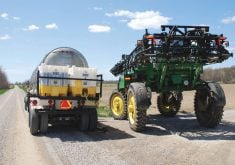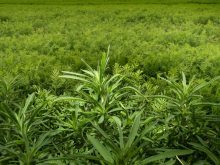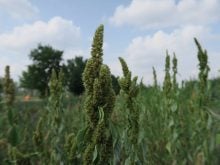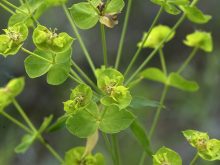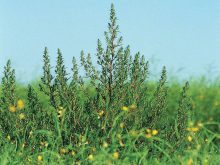WINNIPEG — Kim Brown was on a quest in August and part of September.
Manitoba’s provincial weed specialist was searching for an answer to the following question: is white cockle, a weed sometimes called white campion, safe for cattle to eat?
Brown asked weed scientists and livestock nutrition experts with Agriculture Canada and at universities throughout Western Canada, but no one knew if the weed is toxic.
Read Also

Russian wheat exports start to pick up the pace
Russia has had a slow start for its 2025-26 wheat export program, but the pace is starting to pick up and that is a bearish factor for prices.
“There is no scientific data. There is anecdotal information, but we can’t go by that,” said Brown.
“The answer is that there is no information.”
The weed expert was seeking an answer to the white cockle question because several farmers in Manitoba found the weed in their hay fields this summer.
One of those producers is Robert Grieger, who raises cattle and produces grain and hay on his farm near Beausejour, Man.
Grieger had never heard of white cockle until this summer, when the weed infested a quarter section of his alfalfa crop.
“I’ve been making hay for 40 years. I’ve never seen this weed in my life. I didn’t even know what it was,” Grieger said in the third week of August.
It’s possible that a flock of geese deposited the weed seeds because thousands of geese were on the hay field this spring, Grieger said.
Regardless of how it got there, Grieger was reluctant to bale and feed a strange and possibly toxic weed to his cattle.
He cut half of the 160 acres and then stopped.
“People tell me it’s poisonous,” Grieger said.
“If it’s poisonous, I’m not feeding it to my cows.”
The toxic reputation of white cockle may be guilt by association.
An Alberta Agriculture website has information on cow cockle, a weed that’s very similar to white cockle.
“The leaves and seeds of cow cockle are poisonous to livestock,” the website says.
“One hundred and twenty-two grams of cow cockle seeds per 45 kilogram body weight is reported to cause death.”
Cow cockle and white cockle are part of the same family of weeds, but that doesn’t mean white cockle is also toxic for livestock, Brown said.
“There are four weeds that are very closely related. There is cow cockle, white cockle, night flowering catchfly and bladder campion,” Brown said, explaining the plants are part of the pink/carnation family.
As Brown discovered after speaking with scientists across the Prairies, there is no data on the toxicity of white cockle.
“We don’t know if it’s the same thing (as cow cockle) or not, so we can’t make any recommendations,” she said.
White cockle isn’t alone. Scientists lack data for many weeds on whether it’s risky for livestock to eat.
“Most of your weeds in our Noxious Weeds Act … the Tier 3 (weeds), those are very common agricultural weeds. We have almost no (toxicity) information on any of those,” Brown said.
Grieger has decided to not feed the white cockle-infested forage to his cattle because it isn’t worth the risk.
Other producers, with a lower concentration of white cockle in their hay, might make a different decision.
In Grieger’s case, he contacted the provincial crop insurer – Manitoba Agricultural Services Corp. – seeking compensation for the production losses on 160 acres of forage land.
In an email, MASC said it doesn’t provide coverage for weed infestations.
“Weeds and other management-related causes of loss are uninsurable under the Agri-Insurance contract,” it said.
Contact robert.arnason@producer.com




